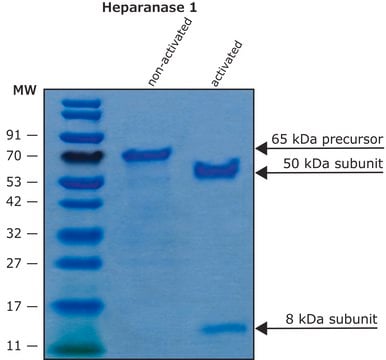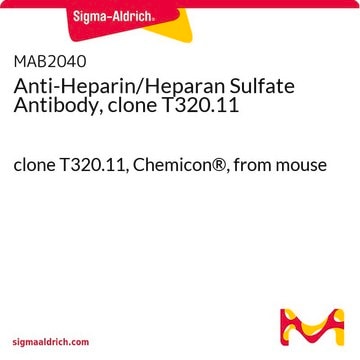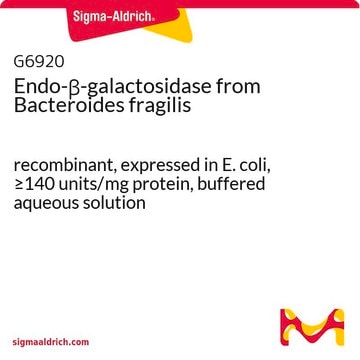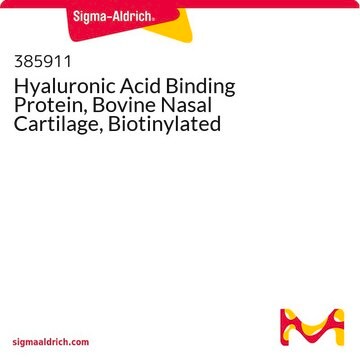H3917
Heparinase I and III Blend from Flavobacterium heparinum
lyophilized powder, stabilized with ∼ 25% (w/w) bovine serum albumin, ≥200 unit/mg protein (enzyme + BSA)
Synonim(y):
Heparinase I and Heparinase III blend
About This Item
Polecane produkty
pochodzenie biologiczne
bacterial (Flavobacterium heparinum)
Poziom jakości
białko sprzężone
conjugate (Glucosaminoglycan)
Postać
lyophilized powder
aktywność właściwa
≥200 units/mg protein
stężenie
≥200 unit/mg protein (enzyme + BSA)
Warunki transportu
dry ice
temp. przechowywania
−20°C
Opis ogólny
Zastosowanie
- the digestion of heparan sulfate from ovine vitreous
- human embryonic kidney cells
- glycosaminoglycans from arterial tissues
- P0 retinae digestion
Działania biochem./fizjol.
Opakowanie
Definicja jednostki
One unit will form 0.1 micromole of unsaturated uronic acid per hour at 7.5 at 25 degrees C using bovine kidney Heparan, Sulfate as substrate for heparinase III.
One unit will form 0.1 μmole of unsaturated uronic acid per hr at pH 7.5 at 25 °C. One International Unit (I.U.) is equivalent to approx. 600 Sigma units. Package sizes are sold in Sigma units.
Inne uwagi
Kod klasy składowania
13 - Non Combustible Solids
Klasa zagrożenia wodnego (WGK)
WGK 3
Temperatura zapłonu (°F)
Not applicable
Temperatura zapłonu (°C)
Not applicable
Certyfikaty analizy (CoA)
Poszukaj Certyfikaty analizy (CoA), wpisując numer partii/serii produktów. Numery serii i partii można znaleźć na etykiecie produktu po słowach „seria” lub „partia”.
Masz już ten produkt?
Dokumenty związane z niedawno zakupionymi produktami zostały zamieszczone w Bibliotece dokumentów.
Klienci oglądali również te produkty
Produkty
Uncover more about glycosaminoglycans and proteoglycans including the structure of glycosaminoglycans (GAGs), the different types of GAGs, and their functions.
Nasz zespół naukowców ma doświadczenie we wszystkich obszarach badań, w tym w naukach przyrodniczych, materiałoznawstwie, syntezie chemicznej, chromatografii, analityce i wielu innych dziedzinach.
Skontaktuj się z zespołem ds. pomocy technicznej











